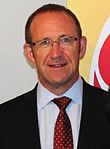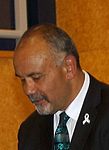Next New Zealand general election
|
|
|||||||||||||||||||||||||||||||||||||||||||||||||||||||||||||||||||||||||||||||||||||||||||||||||
|---|---|---|---|---|---|---|---|---|---|---|---|---|---|---|---|---|---|---|---|---|---|---|---|---|---|---|---|---|---|---|---|---|---|---|---|---|---|---|---|---|---|---|---|---|---|---|---|---|---|---|---|---|---|---|---|---|---|---|---|---|---|---|---|---|---|---|---|---|---|---|---|---|---|---|---|---|---|---|---|---|---|---|---|---|---|---|---|---|---|---|---|---|---|---|---|---|---|
|
|||||||||||||||||||||||||||||||||||||||||||||||||||||||||||||||||||||||||||||||||||||||||||||||||
|
|
|||||||||||||||||||||||||||||||||||||||||||||||||||||||||||||||||||||||||||||||||||||||||||||||||
|
All 120 seats (plus any overhang) in the House of Representatives 61 seats needed for a majority |
|||||||||||||||||||||||||||||||||||||||||||||||||||||||||||||||||||||||||||||||||||||||||||||||||
| Opinion polls | |||||||||||||||||||||||||||||||||||||||||||||||||||||||||||||||||||||||||||||||||||||||||||||||||
|
|||||||||||||||||||||||||||||||||||||||||||||||||||||||||||||||||||||||||||||||||||||||||||||||||
|
|||||||||||||||||||||||||||||||||||||||||||||||||||||||||||||||||||||||||||||||||||||||||||||||||
The 2017 New Zealand general election is scheduled to be held on Saturday 23 September 2017 to determine the membership of the 52nd New Zealand Parliament. The current Parliament was elected on Saturday 20 September 2014 and expires if not dissolved earlier on 10 October 2017.
The National Party has governed since 2008, in a minority government with confidence and supply from the Māori, ACT and United Future parties. The National Party will be seeking a fourth term in government against opposition parties Labour (the official opposition), Green and New Zealand First. It will be the first election for Bill English as Prime Minister, after he replaced John Key on 12 December 2016.
New Zealand uses the mixed-member proportional (MMP) voting system to elect the House of Representatives. Each voter gets two votes, one for a political party (the party vote) and one for a local candidate (the electorate vote). Political parties receive seats in the House in proportion to the percentage of the party vote their receive; a party must gain 5% of the total party vote or win one electorate in order to be entitled to receive seats. 71 of the 120 seats are filled by the MPs elected from the electorates, with the winner in each electorate determined by the "first past the post" method (i.e. most votes wins). The remaining 49 seats are filled by candidates from each party's closed party list. If a party wins more electorates than seats it is entitled to under the party vote, an overhang results; in this case, the House will add extra seats to cover the overhang. The 2014 election saw a one-seat overhang where Peter Dunne won the Ōhāriu electorate when his United Future Party was entitled to zero seats under the party vote.
...
Wikipedia







